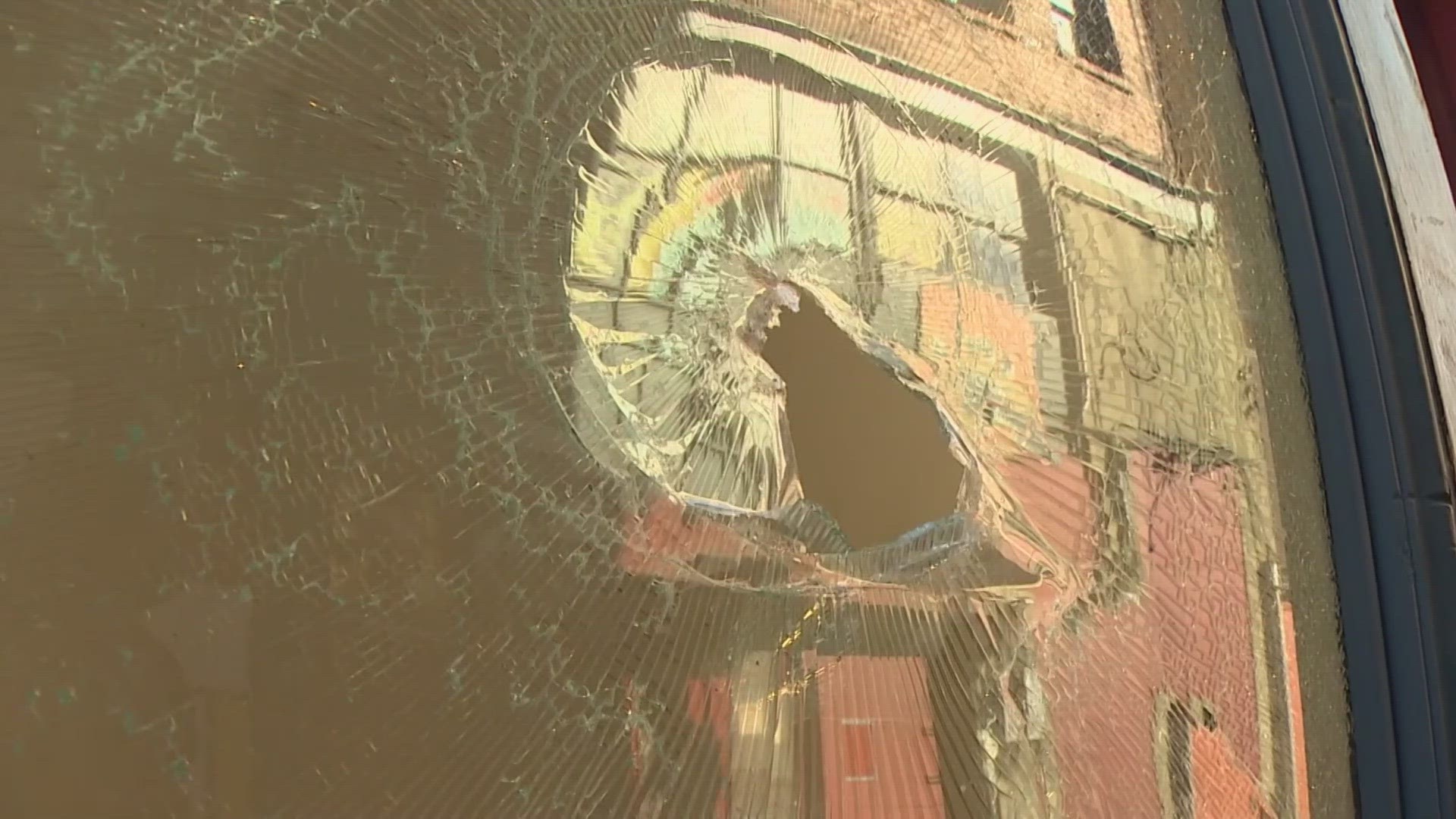SEATTLE — It was a beautiful September evening in the Chinatown-International District. The Wing Luke Museum had just closed for the day and a private tour was about to begin when the sounds of shattered glass stunned the people inside.
Surveillance video captured a man walking into Canton Alley with a sledgehammer and started smashing the windows one by one.
For the first time, we’re hearing from the employees who were inside and described the confusion, followed by anger.
“It was very methodical,” said Monica Day, director of finance and human resources. “This person was angry but very calm while he was doing it and that was what was most striking to me.”
Hanif Muid, the museum’s head of security, ran out and confronted the attacker.
“We saw a gentleman in the alley hitting Apartment Six, which is one of the exhibits with a hammer,” Muid said. “At that point, we yelled at him, 'Hey man, stop! What are you doing?’”
Muid said that’s when the man went on a racist tirade.
“He started spouting rhetoric about the Chinese ruining his life,” Muid said.
The four employees we spoke with all believe it was a deliberate attack and they were targeted because of their race.
Prosecutors agreed and have charged the suspect, Craig Milne, with a hate crime.
“It is nothing less than an act of terror,” said Joel Barraquiel Tan, executive director of Wing Luke Museum.
A new Pew Research Survey shows what happened at the Wing Luke is part of a spike in anti-Asian hate crimes across the country. Out of 7,006 Asian adults surveyed, about a third say they know another Asian person who has been threatened or attacked since the COVID-19 pandemic began.
74% of Asians born in the U.S. said they have been treated as a foreigner, including being told to go back to their home country.
“The harm this has done has a really long tail and is really personal,” Barraquiel Tan said. “That sledgehammer started swinging as far back as the Chinese Exclusion Act.”
The Chinese Exclusion Act of 1882 banned the Chinese from immigrating to the U.S. after Chinese settlers came to the West Coast to work in the booming lumber mills, fishing operations and railroads.
That was threatening to White workers wanting to protect their jobs.
Anti-Asian backlash drove Chinese residents out of several big cities, including Seattle.
“We feel the burden of not just one act of hate, nine broken windows, but over a century of discrimination, of anti-Asian hate that has a long continuous thread,” said Heather Chan, director of Museum Services.
When violence happens at a place that is a beloved part of the Asian community, it hurts even more.
“The amount of damage that he did is not just monetary, but it's traumatic for our staff, traumatic for our neighborhood,” Day said. “This is the home of so many stories and so many generations and it just felt like not only an attack on a building, a personal attack and an attack on an entire race.”
The Wing Luke Museum is a place where history is preserved. It's the only pan-Asian art and history museum in the United States focusing on the history, stories, art and culture of Asian Americans, Native Hawaiians and Pacific Islanders. Visitors can immerse themselves in the stories of Asian pioneers and walk the halls of a historic building where immigrant families lived in the early 1900s.
Two of the broken windows used to be the living room windows of an apartment preserved for private tours. Fixing the nine damaged windows will cost more than a hundred thousand dollars.
But repairing the damage to the community, a place so central to Seattle’s Asian history is what psychologist Sally Chung said will be more difficult.
“It's a big deal because it tells us even in our own community, the Wing Luke is in the CID which is predominantly Asian, that even in our own spaces we're not safe,” Chung said. “It's really scary. If you can't be safe in a predominantly Asian area as an Asian person, where are you safe?”
Bonded by a hateful act, this is a reminder the work in fighting racism is not over.
Despite the violence, there is even more resilience and resolve to protect the beating heart of the Chinatown-International District.
“We quickly learned that the community strength showed up very concretely," Barraquiel Tan said. "No one was going to mess with us more."
To learn more about supporting the Wing Luke Museum, click here.

